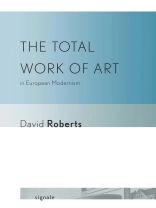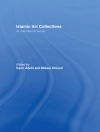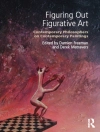In this groundbreaking book David Roberts sets out to demonstrate the centrality of the total work of art to European modernism since the French Revolution. The total work of art is usually understood as the intention to reunite the arts into the one integrated whole, but it is also tied from the beginning to the desire to recover and renew the public function of art. The synthesis of the arts in the service of social and cultural regeneration was a particularly German dream, which made Wagner and Nietzsche the other center of aesthetic modernism alongside Baudelaire and Mallarmé.
The history and theory of the total work of art pose a whole series of questions not only to aesthetic modernism and its utopias but also to the whole epoch from the French Revolution to the totalitarian revolutions of the twentieth century. The total work of art indicates the need to revisit key assumptions of modernism, such as the foregrounding of the autonomy and separation of the arts at the expense of the countertendencies to the reunion of the arts, and cuts across the neat equation of avant-gardism with progress and deconstructs the familiar left-right divide between revolution and reaction, the modern and the antimodern. Situated at the interface between art, religion, and politics, the total work of art invites us to rethink the relationship between art and religion and art and politics in European modernism.
In a major departure from the existing literature David Roberts argues for twin lineages of the total work, a French revolutionary and a German aesthetic, which interrelate across the whole epoch of European modernism, culminating in the aesthetic and political radicalism of the avant-garde movements in response to the crisis of autonomous art and the accelerating political crisis of European societies from the 1890s forward.
Mục lục
Introduction Part I: The Artwork of the Future 1. Refounding Society
Ancients and Moderns: Rousseau’s Civil Religion
The Festivals of the French Revolution
Revolution and Representation
The Abyss of Political Foundation2. The Destination of Art
The Secularization of Art: Quatremère de Quincy
Aesthetic Education: Schiller
Aesthetic Revolution: Hölderlin
The Destiny of Art: Hegel3. Prophets and Precursors: Paris 1830–1848
Organic and Critical Epochs: Saint-Simon
Musical Palingenesis: Mazzini and Balzac
The Musical City: Berlioz
Ancients and Moderns: Wagner4. Staging the Absolute
Modernism or the Long Nineteenth Century
The Birth of Tragedy: Nietzsche
The Great Work: Mallarmé
Dialectic of Enlightenment: From the Nineteenth to the Twentieth Century Part II: The Spiritual in Art 5. Religion and Art: Parsifal as Paradigm
The Idea of Return
Religion and Art
The Profoundest Symbol: The Grail
The Theater to Come6. The Symbolist Mystery
Homage to the Gesamtkunstwerk
The Ultimate Fiction: Mallarmé’s Book
The Last Ecstasy: Scriabin’s Mysterium
Gnosis and Ecstasy7. Gesamtkunstwerk and Avant-Garde
The Avant-Garde: Analysis and Synthesis
From Dionysus to Apollo: Stravinsky and the Ballets Russes
The Spiritual in Art: Kandinsky and the Blaue Reiter
The Crystal Cathedral: Bruno Taut and the Bauhaus8. The Promised Land: Toward a Retotalized Theatre
The Theatre Reform Movement
World Theatre: Hofmannsthal and Claudel
Theatre of Cruelty: Brecht and Artaud
Synthesis of the Arts: A Typology Part III: The Sublime in Politics 9. National Regeneration
The Community to Come
Romain Rolland: Le théâtre du peuple
Gabriele d’Annunzio: Il fuoco
The Nietzschean Sublime10. Art and Revolution: The Soviet Union
The Birth of the New Man
Festivals of the Revolution
From Art to Life: The Russian Avant-Garde
Stalin’s Total Work of Art11. The Will to Power as Art: The Third Reich
The Avant-Garde and the Breakthrough to Totality
Benjamin and the Aestheticization of Politics
The State as Work of Art: Jünger’s Der Arbeiter
Hitler’s Triumph of the WillConclusion
Bibliography
Index
Giới thiệu về tác giả
David Roberts is Professor Emeritus of German at Monash University. He is the author of Art and Enlightenment, and coauthor of Dialectic of Romanticism, and A Critique of Modernism, among many other books.












